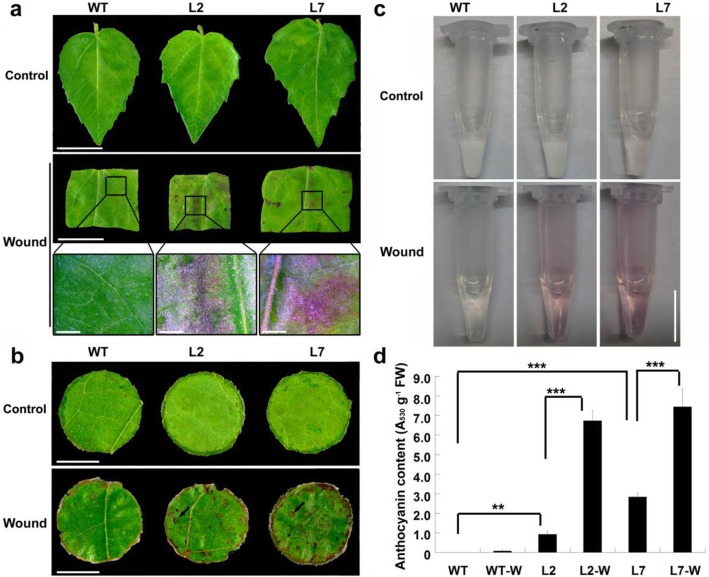Fig. 1.
Wound induced accumulation of anthocyanins in the leaves of transgenic plants overexpressing PdMYB118. a Wound prompts anthocyanin biosynthesis in the leaves of transgenic plants. The leaves of WT and transgenic plantlets cultured on MS medium were cut into pieces and transferred onto MS medium for 2 days. Images in the third row were the higher magnification of the framed area of the images in the secondary row. Scale bars for the images in the first and secondary rows stand for 1 cm and in the third row stand for 1 mm. b Accumulated anthocyanin biosynthesis in the wounded leaves of transgenic plants grown in greenhouse. Matured leaves were cut into leaf discs and transferred onto MS medium for 2 days. The black arrows indicate the red speckles. Scale bar = 0.5 cm. c Anthocyanin extracted from the wounded leaf discs in (b). Scale bar = 0.5 cm. d Relative content of anthocyanins extracted from the leaves in (b). Control, before wound induction; Wound, after wound induction on MS medium for 2 days; WT, leaves of wild type Shanxin Yang plants; L2 and L7, leaves of transgenic plants overexpressing PdMYB118; WT-W, wounded leaves of wild type plant; L2-W and L7-W, wounded leaves of transgenic plants (Lines L2 and L7). Values are means and standard deviations of three biological replicates (n = 3). ** and ***, significant differences in comparison to WT, L2 and L7 at P < 0.01 and P < 0.001, respectively (Student’s t-test)

